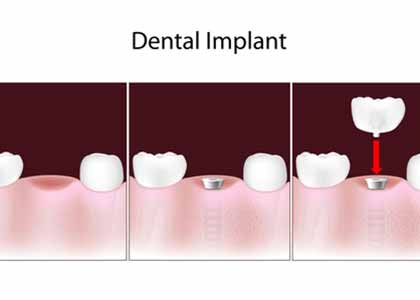Dentist describes the dental implant procedure
Dr. Matthew Church and the team of Washington Street Dentistry encourage patients to make dreams come true—even if these dreams are just improvements in the aesthetics of their smile. From general to cosmetic dentistry, our team can assist men and women in achieving the smile they’ve always wanted. For those who are struggling with extraction or loss of permanent adult teeth, these gaps may become problematic. This is why our professionals will recommend replacement solutions. The gold standard in tooth replacement is that of the dental implant.

Dental implants are titanium metal restorations that are made to act as a root replacement. These posts are surgically implanted into the bone of the jaw and are repaired over the top with a dental crown, dental bridge, or even full dentures. Dental implants have a variety of purposes, from replacing a missing tooth, supporting a dental bridge, or stabilizing dentures.
Dr. Matthew Church is a dentist in the Indianapolis, Indiana community who can explain to patients the advantages of placing dental implants and what is involved in the procedure. It all starts with a consultation appointment during which x-rays are taken and used to determine if patients have sufficient bone of the jaw to maintain dental implants in place as necessary for optimum function. Patients may also take the time to learn about alternative solutions including dental bridges and dentures to see if they may be more suitable.
Once patients have decided that dental implants are right for them, an appointment is made for the placement of the restorations. This is an oral surgery that is done in our practice and performed by Dr. Church himself, a member of the American College of Oral Implantology with the experience and professionalism to ensure the results patients deserve. The procedure is done with proper anesthetics and sedation, and once the implant is in place in the jaw, needs to be allowed the time for osseointegration to happen. This is the process where the bone of the jaw wraps around the implant itself for stability and strength. This can take several months, and then the implant is restored with the final restoration.
Share this Article
Back to Dental Implants Page





